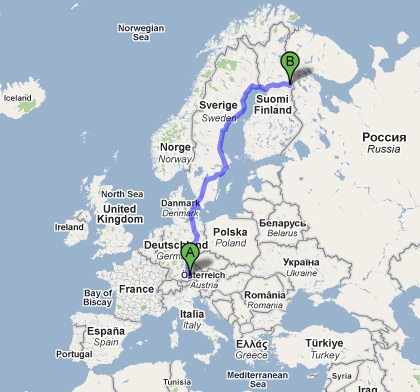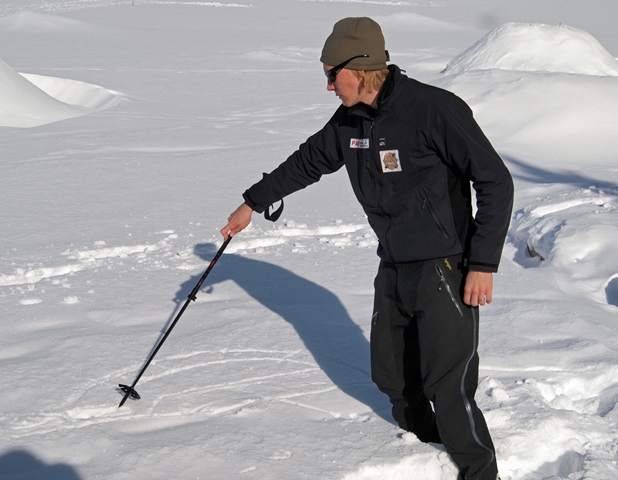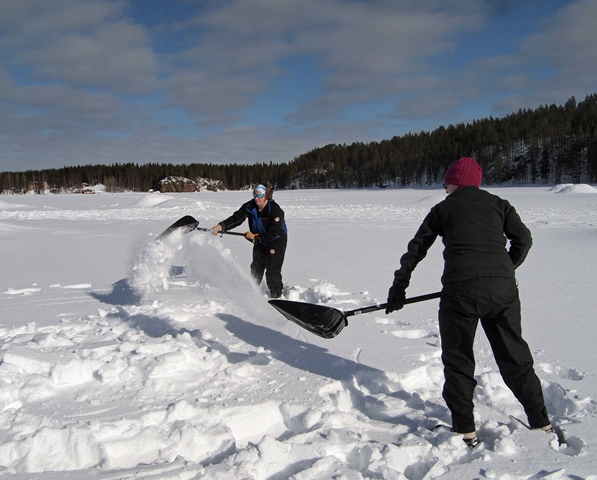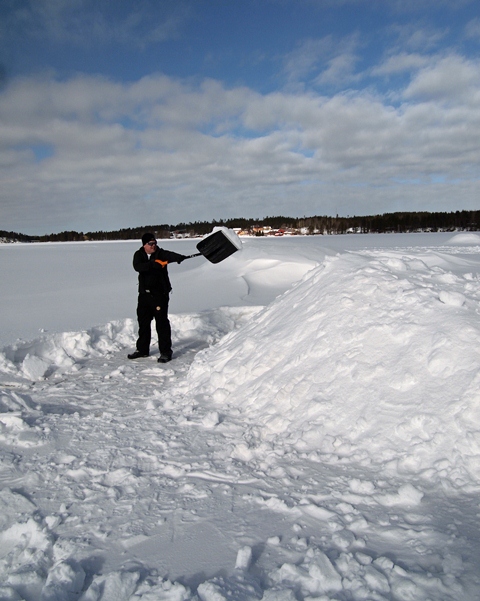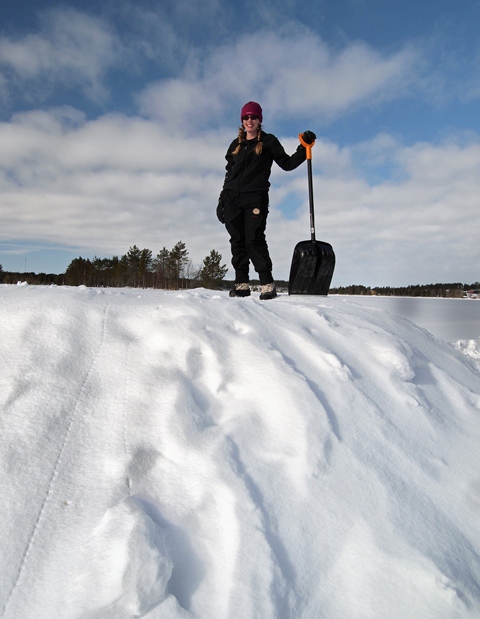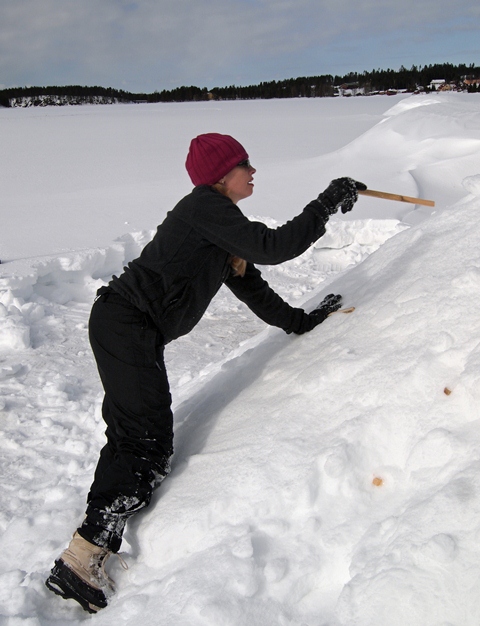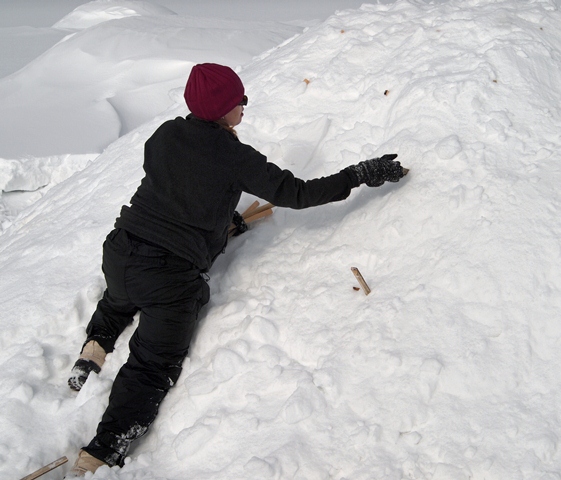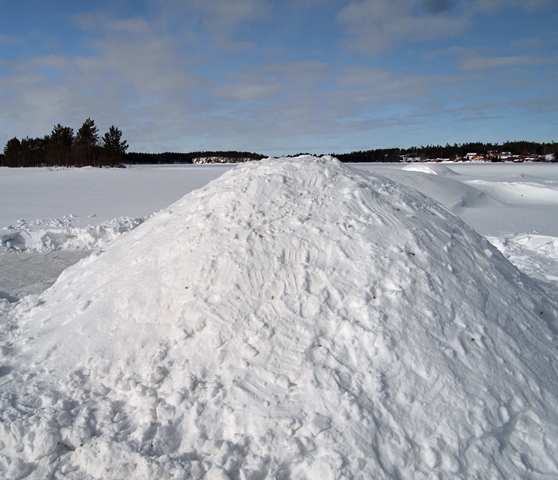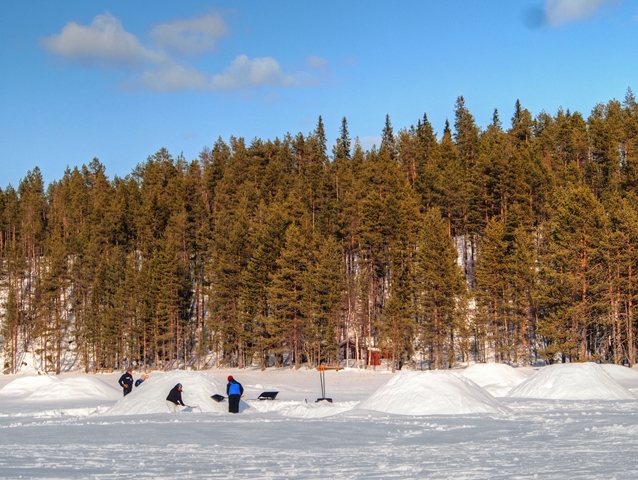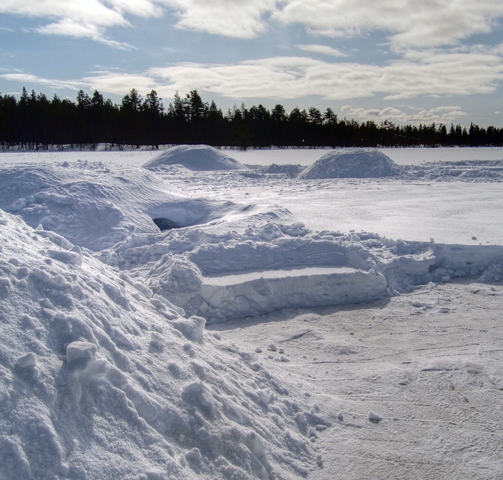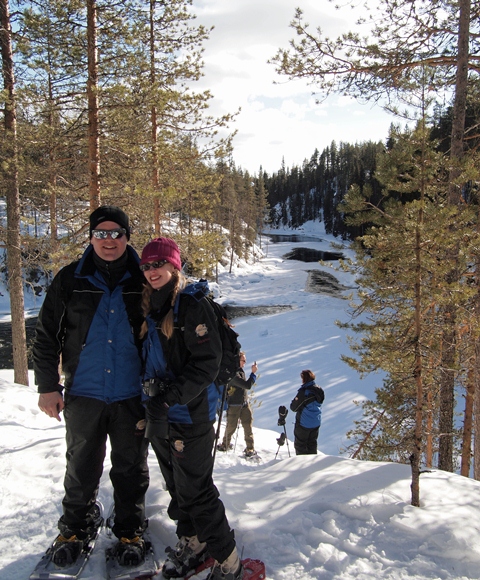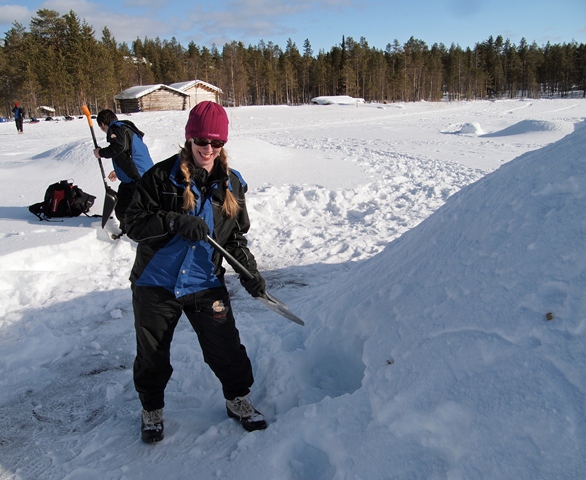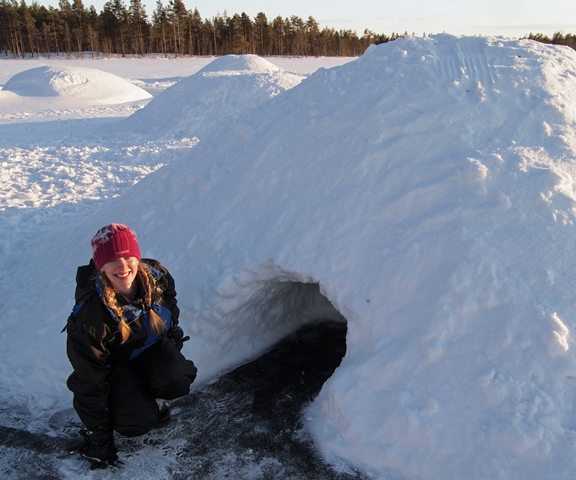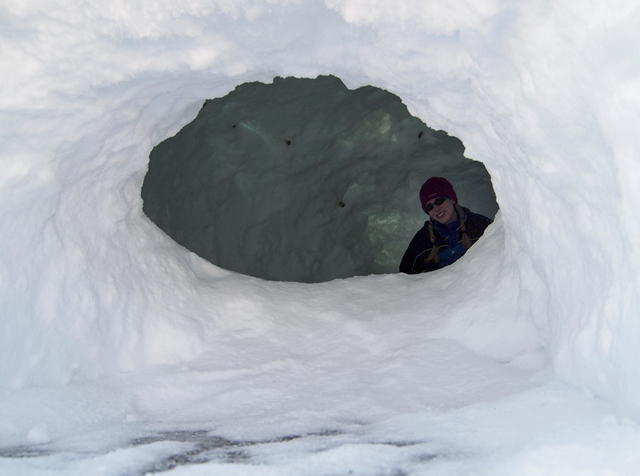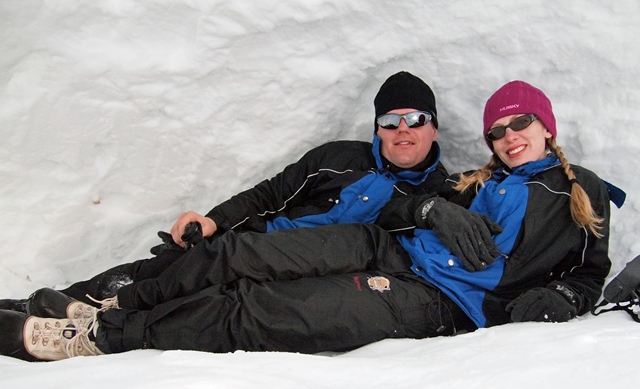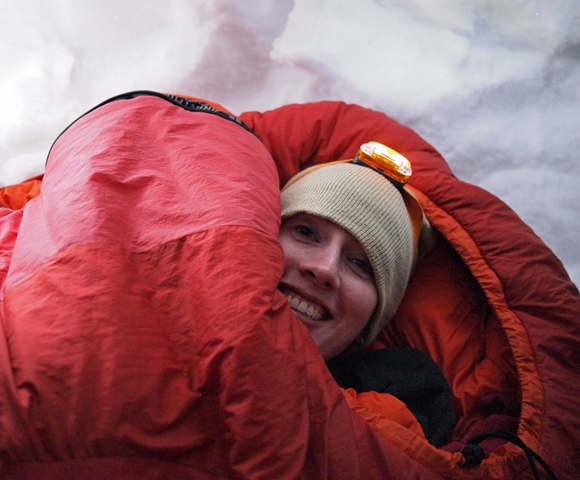Basecamp, Finland style
 Sunday, June 5, 2011 at 8:00
Sunday, June 5, 2011 at 8:00 We have already posted a bit about our winter week adventure in Finland, with highlights such as building an igloo and going snowmobiling (with more posts to come, including sledding with huskies!). This post will briefly cover the "basecamp" aspect, with some unique Finnish drinks...
We stayed at "Basecamp Oulanka". This is a small collection of lodges just outside Oulanka National Park. The park sits on the border with Russia, a few kilometers south of the Arctic Circle.
One gets here through Kuusamo airport. Locals say "Welcome to Lapland" but Kuusamo is technically part of Oulu province (on it's northern edge) just below the formal province of Lapland. On the map above, the rest of Finland above Kuusamo is all Lapland province and the cultural region extends into Sweden too.
Basecamp sits on a small rise, perhaps 100m from the shore of a lake. Two 2-story buildings house the guests -- each building has only 8 rooms (you see the top story in the left photo, below). Every room has a balcony that looks into the forest towards the lake.... although you can't see water in Winter.

The central building functions as the equipment center and "lobby" facility. In Winter, each guest heads to the lower level to be issued warm boots, socks, fleece long underwear, snow pants, heavy jackets and gloves. The upper level has the camp reception, kitchen, and a common/dining room.
The photo above/right is from breakfast -- everyone is decked out and ready to go. In the evening, however, things get more relaxed and move in front of the fireplace! It's a nice stone hearth with plenty of room to put your feet up after a tough day in the snow.
Frau A and I like to try local fare, and around the fireplace it seemed appropriate to get to know Finnish drinks.
The first is from a company called Jellona.
Jellona make two kinds of schnapps -- one flavored with anise (the signature flavor in black liquorice) and the one pictured here that is flavored with tar. Yes, tar. Notice the barrel on the label?
It has a strong, smoky, "tarry" (how else to describe it?) character. Definitely puts hair on the chest. A number of people in our group gave it a shot... not the crowd favorite after that. Perhaps it's an acquired taste?
The anise version was more predictable - those that like black liquorice flavor loved it, those that don't, didn't. Frau A said that her father would probably really like the anise version...
Another evening we learned about Finnish cut brandy. Our guide (who doubled as bartender) explained that in wartime, brandy was in short supply so Finns would cut it with vodka.
One star indicates one part brandy to two parts vodka (1/3). Three stars means three parts brandy to one part vodka (3/4, a higher quality).
We tried a one star variety. Not bad. The mix is strange at first, but it works. I'll bet most people would prefer this to straight vodkas.
Jaloviina is a popular brand -- Wikipedia's photo for cut brandy, plus a Facebook page!
Wikipedia notes that vodka-cut-brandy is also common in East Germany as general practice. Interestingly, these versions are not graded -- must be the Russian influence, because Germans tend to control products closely.
I've seen Goldbrand (a German version) in stores and may have to try it. One could cut their own as well...
Finally, we sampled the Lapponia brand of Finnnish liquers.
These are sweeter and thicker than schnapps, with some unique flavors too. We tried cloudberry (not bad!) but blueberry, lingonberry, and buckthorn are also available!
We brought a bottle of cloudberry back (actually, Frau A snuck it home and surprised me for my birthday). In addition to apertif format, we will try it as an ingredient with desserts too.
At the end of each day, most people were quite tired from whatever activity kept us romping through the snow for hours, and after a hot meal & drinks we were content to enjoy the sunset. It seems to be a great options for Summer vacation too, with white water rafting. We'll see...

 Herr J ...
Herr J ...  3 Comments
3 Comments 



